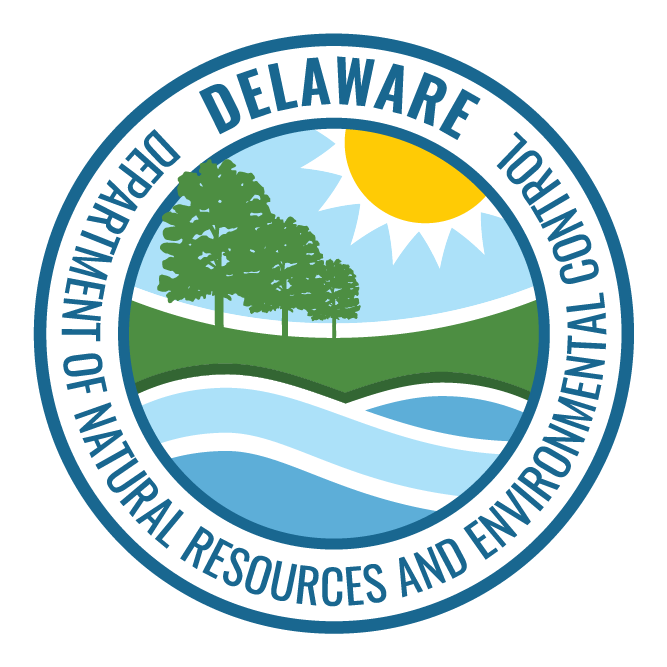Pages Tagged With: "watershed"
Library: Management Plans and Monitoring Protocols
A collection of management plans and monitoring protocols from the DNREC Watershed Assessment Section. Wetland Publications LibraryChristina Watershed Wetland Assessment
The Christina Watershed is located in New Castle County, extending north and west into Maryland and Pennsylvania. In Delaware this watershed includes the cities and towns of Wilmington, Elsmere, Newark, and Christiana. Wetland Assessment ReportsSmyrna Watershed Wetland Assessment
The Smyrna River watershed encompasses 71 square miles and is composed of three sub-watersheds: Smyrna River, Duck Creek, and Cedar Swamp-Delaware Bay. It is located partially in Kent County and partially in New Castle County. The watershed is within the Delaware Bay and Estuary Basin, so all of its waters drain into the Delaware Bay.Dam Safety
The Delaware Dam Safety Program works to reduce the risk of failure of dams and to prevent injuries, property damage, and loss of reservoir storage due to dam failure. It oversees the design and construction, operation and maintenance, and inspection of regulated dams in Delaware.Contact Us
Questions and Answers
A collection of common questions, and answers, about the coastal construction regulatory program. The Division of Watershed Stewardship’s Shoreline and Waterway Management Section has a series of maps that show the location of the Building Line.Adopt-a-Beach
DNREC’s Adopt-A-Beach program is a partnership between the Department and Delaware volunteers, working in tandem to protect and enhance Delaware’s beaches.Contact Us
Anthony DeSio Environmental Scientist 302-608-5500
Beach Grass Planting
Volunteers are the backbone of Delaware’s shoreline stabilization. Every spring since 1990, except when pandemic conditions prevented it, dedicated volunteers have stabilized Delaware’s sand dunes by planting more than 5 million stems of Cape American beach grass along ocean and bay beaches. The 2026 Annual Beach Grass PlantingYou Can Help Protect Beaches and Dunes
There are several ways property owners and visitors can preserve and protect beaches and dunes.Contact Us
Shoreline and Waterway Management Section 302-608-5500
Beaches and Shorelines
The DNREC Shoreline and Waterway Management Section works to maintain and improve Delaware’s beaches, shorelines and waterways.Contact Us
Shoreline and Waterway Management Section 302-608-5500
Coastal Construction
Coastal development adds stress to beach systems, especially to dunes. Dunes and beaches are the first lines of protection from wave action for coastal communities during coastal storms. Dunes also act as storage areas that supply sand to the beach during storms.Contact Us
Delaware Beach Building Line Maps
The Regulations Governing Beach Protection and the Use of Beaches (7 DE Admin. Code 5102) establishes a “building line” along the coast and stipulate that no construction may take place seaward of that without a Coastal Construction Permit or Coastal Construction Letter of Approval from the Department. The building line is mapped by the DepartmentBeaches are a Natural Resource
The sandy beaches along the Atlantic Ocean and Delaware Bay shorelines are valuable natural resources to the State of Delaware. The beaches were created by nature and continue to be shaped by wind and waves. The 1972 Beach Preservation Act (7 Del.C. Chapter 68) provides the authority to DNREC to enhance, preserve, and protect theMacroalgae in Delaware’s Inland Bays
The water quality of Delaware’s Inland Bays is very important to outdoor recreational activities available for Delawareans and visitors alike. The Assawoman, Indian River and Rehoboth Bays provide a superb venue for fishing, boating, waterskiing and other related outdoor activities. However, like so many natural resources, these areas also suffer from the negative effects ofLandowner Protection Options
Approximately 45 percent of all wetlands in the state are located on privately owned lands, with the remaining wetlands found on both state and federal lands. With nearly half of Delaware’s wetlands found on private lands it is important for landowners to recognize the benefits wetlands provide and work towards conserving and preserving them.The Delaware Wetlands Conference
The next Delaware Wetlands Conference is set for Jan. 27 and 28 in 2026 at the Chase Center on the Riverfront in Wilmington. The conference planning committee is excited to integrate feedback and share new features for the upcoming conference. In previous years, thisLeipsic Watershed Wetland Assessment
The Leipsic River watershed is composed of two sub-watersheds, Leipsic River and Little Creek, and encompasses 128 square miles. It is located in Kent County within the Delaware Bay and Estuary Basin, and all of its waters drain into the Delaware Bay. Land cover in this watershed is dominated by wetlands and agriculture.Red Lion Watershed Wetland Assessment
The Red Lion watershed is located within New Castle County, where it encompasses 46,283 acres (72 square miles) of land within the Delaware Bay and Estuary Basin. It is composed of the C&D Canal East, Dragon Creek, Red Lion Creek, Army Creek, and Broad Dike Canal. Approximately 16% of the land area of the watershedChesapeake Bay Projects
This page includes information on some of the projects undertaken by DNREC and its partners to help meet the goals of the Chesapeake Bay Watershed Implementation Plan. Related Information Best Management Practices StoryMap Redden State Forest Project (2013)
Chesapeake Bay Watershed Implementation Plan – Phase III
There have been three phases of Delaware’s Chesapeake Bay WIP. Delaware developed its Phase I WIP in 2010 and its Phase II WIP in 2012. Both the Phase I and Phase II WIPs describe actions and controls to be implemented by 2017 and 2025 to achieve applicable water quality standards. The Phase III WIP providesChesapeake Bay Watershed Implementation Plan – Phase I
Draft Phase I Watershed Implementation Plans (WIPs) were due to EPA on Sept. 1, 2010. Final plans were submitted on Nov. 29, 2010. Following the release of Delaware’s Draft Phase I WIP, numerous comments and questions from both EPA and various stakeholder groups within the watershed were submitted.Chesapeake Bay Watershed Implementation Plan – Phase II
Delaware’s Draft Phase II Watershed Implementation Plan for the Chesapeake Watershed was submitted to the EPA on Dec. 15, 2011. EPA reviewed the document and provided comments in Feb. 2012. Public comments were accepted through March 21, 2012. All suggestions were considered and the document was modified accordingly.Events and Workshops
The DNREC Nonpoint Source Program has hosted and participated in a series of events, workshops, and presentations designed to promote and support improvements to the quality of Delaware’s waterways. Blackbird Creek Fall Festival (Oct. 18, 2025) The Nonpoint Source (NPS) Program staffed an exhibit at the annualChesapeake Bay Milestones
To continue accelerating progress toward meeting water quality goals, the EPA and Chesapeake Bay Program jurisdictions, including Delaware, agreed to set interim two-year milestones – or short-term goals – as a critical part of an accountability framework. ChesapeakeStat Find data and informationChesapeake Bay Watershed Implementation Plan
Delaware is among six Chesapeake Bay Watershed states – along with Maryland, Virginia, West Virginia, Pennsylvania, and New York – and the District of Columbia committed to a federal-state initiative to develop a pollution “diet” that will help restore the water quality of the Bay and its tidal waters by 2025. [columnVerification of Best Management Practices
The implementation, tracking and reporting of Best Management Practices (BMPs) has been at the center of the Chesapeake Bay Program partnership’s restoration efforts for almost three decades. Properly installed and functioning practices and technologies reduce local flooding, protect sources of drinking water, ensure against the collapse of streamWatershed Plans and Strategies
Numerous documents describing plans or strategies for water quality and watershed improvements have been developed over the years. Some of these efforts originated through the Tributary Action Team process while others came through other initiatives. All of the documents below can be considered watershed management plans for the Water Quality Improvement Projects grant programPollution Control Strategies and Tributary Action Teams
A 1997 federal court case required Delaware to set pollution limits for its waterways. These limits are called Total Maximum Daily Loads or TMDLs, a term you will hear a lot in water pollution discussions. In order to meet these new pollution limits, we are identifying ways to reduce water pollution. Usually, citizens don’t getIntegrated Report: 305(b) Report and 303(d) List
Section 305(b) of the Federal Clean Water Act requires that states and other entities prepare and submit Watershed Assessment Reports to the US EPA on April 1 of every even-numbered year.Contact Us
Watershed Assessment and Managment Section 302-739-9939
You Can Help Protect Delaware’s Waterways
There are always things that you can do in your everyday life, no matter where you live, to help protect the waterways that serve as our drinking water sources, habitat for wildlife, and places of recreation. Maintain a Healthy Lawn and Garden A healthy lawn and garden makes aWatershed Assessment and Management
The Watershed Assessment and Management Section oversees the health of the state’s surface water resources and takes actions to protect and improve water quality for aquatic life and human use.Contact Us
Michael Bott 302-739-9939
Whole Basin Management
Beginning in the 1990s, the Department of Natural Resources and Environmental Control (DNREC) took a different approach to assessing, managing, and protecting Delaware’s natural resources. This approach, known as Whole Basin Management, encouraged the various programs throughout DNREC to work in an integrated manner to assess different geographic areas of the state defined on theProtecting Our Waterways
There are many things each of us can do to help reduce nutrient and sediment pollution entering Delaware’s waterways. Our efforts will not only help protect the environment, but in many cases, when you lend a hand to protect our waterways, you will also find that you’re adding beauty to your yard,Water Quality Monitoring
Delaware’s bays, ponds, streams, and rivers are monitored on a regular basis to assess the quality of Delaware’s surface waters. Much of the monitoring is done by DNREC, though other groups, including federal agencies, academic institutions, and citizen volunteer monitoring programs, also contribute to these efforts.Inland Bays Pollution Control Strategy
The Inland Bays Pollution Control Strategy (PCS) and accompanying regulations were finalized in Nov. 2008. This strategy is designed to improve the water quality of the bays (Rehoboth Bay, Indian River Bay, and Little Assawoman Bay), as well as the rivers, streams, and ponds that drain to the bays. ADVISORY: ASurface Water Quality Standards
The National Clean Water Act of 1972 set in place a program that is intended to restore the chemical, physical, and biological integrity of the nation’s waters. To reach these goals, a series of steps were mandated by Congress for the Environmental Protection Agency and the individual States to take. The first step was forPromoting Shellfish Safety
To ensure the safety of Delaware’s shellfish growing areas, it is important that residents and visitors help maintain good water quality and limit pollution while recreating in or near shellfish growing areas.Contact Us
Andrew Bell Environmental Scientist 302-739-9939
Shellfish Plant Inspections
Plant inspections of all shellfish shippers and processors are conducted routinely by certified Shellfish Program staff to ensure compliance with national food safety regulations and those specific to the shellfish industry.Contact Us
Delaware Shellfish Program
The DNREC Shellfish Program is responsible for protecting public health by minimizing the risk of food borne illness due to the consumption of shellfish. Growing Waters and Plant Inspections Andrew Bell Environmental Scientist 302-739-9939 Enforcement Natural Resources Police 302-739-9913Tax Ditch Program
DNREC provides administrative and technical assistance and support to tax ditch organizations and landowners across the State.Contact Us
Drainage Program 302-855-1930




